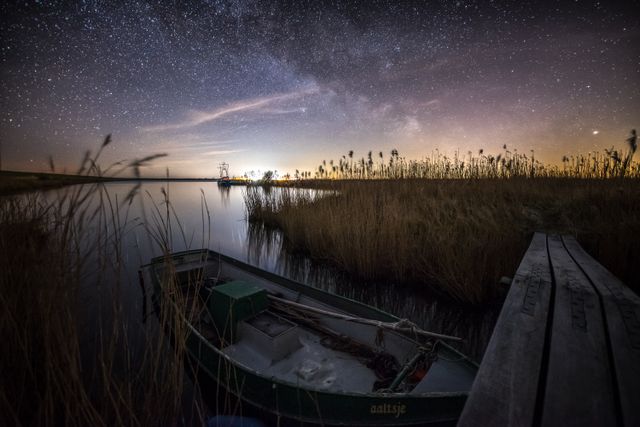In October 2019 the Kapteyn Institute and ScienceLinX at the University of Groningen began a measurement network to measure the darkness in the Wadden. This measurement action is part of the project De Donkerte van het Waddengebied from Natuur- en Milieufederatie Noord-Holland in collaboration with Staatsbosbeheer, Natuurmonumenten and the Natuur- en Milieufederaties of Friesland and Groningen. Theo Jurriens from the Faculty of Science and Engineering is happy to tell you more.
“There are now a total of 31 measurement boxes: a sensor in a kind of Pringles tube with a small window pointed upwards. We also have a few darkness meters outside the Wadden area so we can compare, which helps us learn. In general you see that the Wadden area is the darkest place in the whole of the Netherlands. During the winter in February 2021 the difference was even greater because there wasn't any snow in the north yet but there was in the rest of the country. It hardly even got dark in the cities.”
And it's not just snow that affects the darkness. “There's also a measurement station on the Griend sandbank. It's usually really dark there. But when we had a full moon not long ago it was a completely different story. The effect of the full moon was magnified by the Wadden Sea that worked like a mirror. It was almost as light as in the city of Groningen!”

Theo and his colleagues also organise various star counting campaigns people can do from home. “We asked people to count the stars in the Orion constellation. Unfortunately we had bad weather and it was really cloudy, but we'll have more chances for sure.” Want to have a darkness meter in your backyard? You can! “We're looking into how we can adapt the meter so it's cheaper and people can put it together themselves.”
View the data from the darkness meters at washetdonker.nl or @washetdonker.

“ In general you see that the Wadden area is the darkest place in the whole of the Netherlands ”
Theo Jurriëns